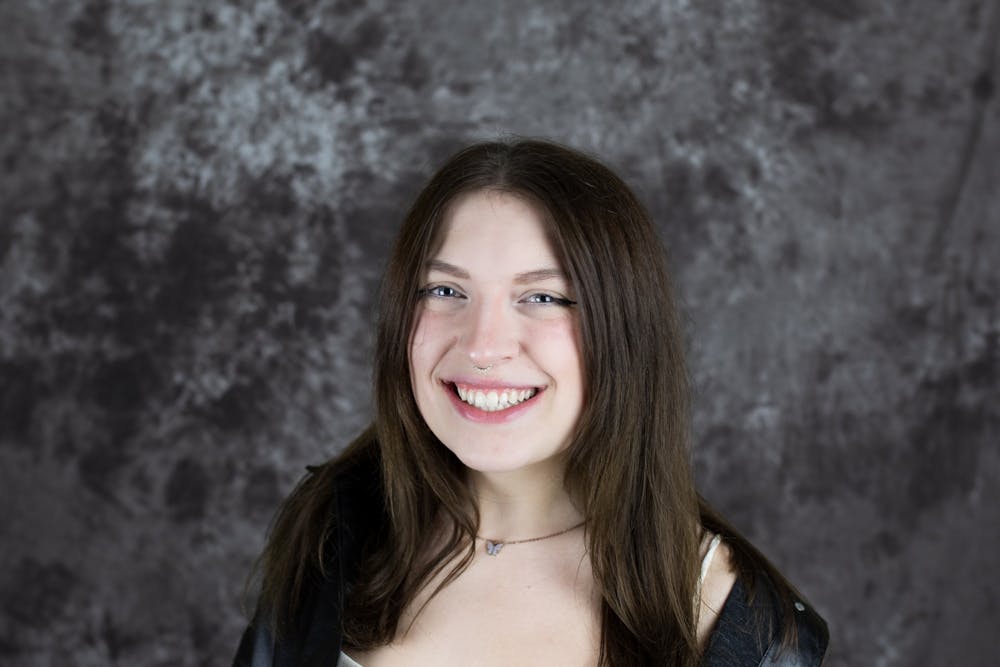When I was a kid, I wore whatever I wanted, much to my sister’s chagrin.
I can still hear her complaining to my mom as I adorned princess dresses to Chuck E. Cheese or gogo boots to Wal-Mart.
I suppose, looking back, it may have been a bit embarrassing for my sister to watch me constantly play public dress-up.
But I never cared.
I just wore what made me happiest.
As I grew up, I became more self-conscious of the choices I made in my wardrobe. I still largely wore the things I liked, but I tried to stay with the trends. My middle school closet was full of Hollister t-shirts and my high school cupboard was packed with Forever 21 dresses.
However, I didn’t ever actually have to confront what my fashion meant to me until I came out as lesbian.
Sexuality and fashion have a long history together, especially for lesbians.
The most well-known of this duality can be found in the “butch” and “femme” lesbian subcultures, terms that gained popularity largely in the 1940s-50s following World War II.
While femme lesbians typically adhere to a traditional feminine aesthetic and gender expression, and are often seen as “straight-passing,” butch lesbians take on a more masculine appearance and presentation. For me, this history is really interesting because I wasn’t aware of the disparities until I came out. I wouldn’t learn what butch and femme were until months after realizing I liked women.
Yet, I still felt a pressure to conform to a “queer look.”
This look, in my mind, was largely made up of what I saw queer women wearing on social media, whether or not it was distinguished as butch or femme.
For instance, when I first came out, I thought I was bisexual. And when I came out I tried to look bisexual.
I wasn’t just buying clothes that I liked or clothes that were trendy, I was buying clothes that I thought would reflect my sexual identity to the public.
From what I learned from social media platforms like TikTok, Tumblr and Instagram, bisexual girls wore Hawaiian shirts, cuffed their jeans and had bobbed hair.
So, I did this too.
Now, I absolutely love having shorter hair (a far cry from the blonde mane of my high school years), but I cringe at the more masculine shirts I tried to pull off.
I’ve always been a feminine girl. Sharpay Evans was my idol growing up, and I adored her oversized pink sunglasses and bedazzled swimsuit in “High School Musical 2.” I was never destined to dress masculinely.
But my sexuality didn’t mean I had to.
The processes of understanding my sexuality and understanding my personal style have gone hand-in-hand.
I no longer identify as bisexual (surprise! I’m gay).
I also no longer feel the need to make sure my fashion meets certain queer expectations.
I still like the idea of my style presenting something about my sexuality. I find comfort in the idea that if you look a certain way, you’ll be able to find a community that presents similarly.
There are certain styles that I’ve adopted to look more like a lesbian. But these styles mean more to me than just helping to conform to queer stereotypes.
I wear these styles because I like them. It’s an added bonus that they confirm my queer identity.
When I saw jokes online about lesbians making earrings out of cigarettes, pill bottles and toy cars — anything, really — I fell in love with the idea. Not just because the earrings would make me look gay, but because I could express myself and my interests in a fun accessory (now everyone can know my love for Sailor Moon, just by looking at my ears).
Understanding and being comfortable with my sexuality has allowed me to regain the freedom fashion gave me growing up. Now I wear what makes me happy, whether that’s my atrociously pink nightgown or wool skirt that looks like it belongs to an 1800s school teacher.
I think this freedom of expression is why queer fashion is so distinct.
Queer fashion isn’t a set of standards you have to conform to. It’s not about looking masculine or feminine or wearing certain clothes.
It’s about giving yourself freedom from standards of any kind.
As queer people free ourselves from the fashion standards of a heterosexual/cisgender focused society, we free ourselves from most standards.
I ask myself a lot, am I dressed like a lesbian?
And the answer doesn’t actually matter much, so long as my fashion reflects myself.
The arts desk can be reached at arts@ubspectrum.com

Kara Anderson is a senior arts editor at The Spectrum. She is an English and Spanish double major and is pursuing a certificate in creative writing. She enjoys baking chocolate chip cookies, procrastinating with solitaire and binging reality TV on the weekends.





